In the picturesque shores of Cape Ann, Massachusetts, lies the enchanting town of Rockport, a coastal gem with a storied past.
From its humble beginnings as a fishing village to its evolution into a beloved artist colony and tourist destination, Rockport Massachusetts history is as vibrant and diverse as its breathtaking landscapes.
Founded in 1623, Rockport’s early settlers were drawn to its natural beauty and abundant resources, establishing a community rooted in maritime industries and maritime trade.
Over the centuries, Rockport’s fortunes ebbed and flowed with the tides of history, from the heyday of its granite quarrying industry to its emergence as a haven for artists seeking inspiration amid its rugged coastal scenery.
Join us on a captivating journey through the annals of Rockport’s past, as we uncover the tales of resilience, creativity, and community that have shaped this quintessential New England town into the beloved destination it is today.
Details About the Rockport, Massachusetts History
Rockport’s history, interwoven with tales of resilient inhabitants, booming industries, and a vibrant artistic spirit, paints a captivating picture.
Let’s delve into Rockport’s past, exploring its early colonization, the arrival of the first settlers, its journey to becoming a separate town, and the rise of its defining characteristics.
Early Colonization and Native American Villages
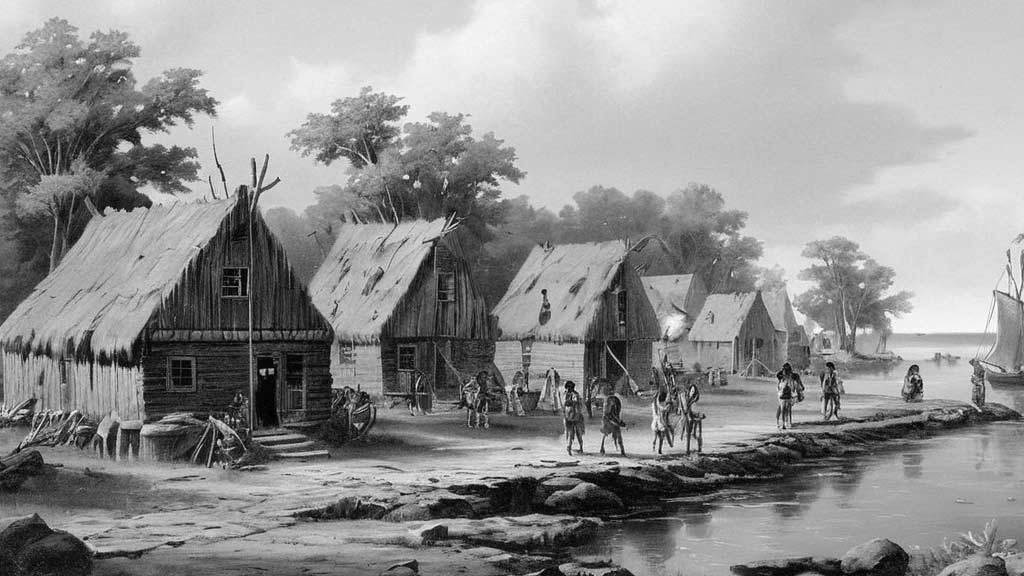
Long before European settlers arrived, Rockport’s land was home to the Agawam people, an Algonquian tribe. Their thriving communities flourished for millennia, utilizing the rich resources of the coastal environment.
Evidence of their presence can still be found in archaeological sites scattered throughout the area.
European exploration of the region began in the early 17th century. French explorers may have been the first visitors, but documented accounts credit Captain John Smith with sighting the area in 1614.
However, it was the English colonists who established a permanent presence in the region, forever altering the course of Rockport’s history.
First Settlers of the Sandy Bay Colony
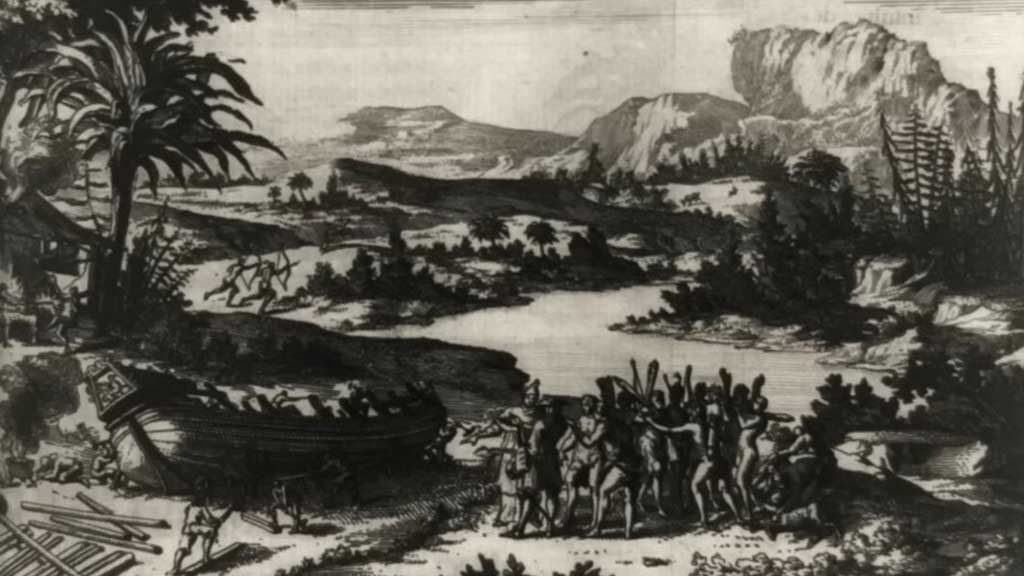
In 1625, Captain Wollaston established the first European settlement in the area, christening it “Mount Wollaston.” However, the settlement’s character shifted dramatically under the leadership of Thomas Morton.
Morton, a flamboyant individual with views counter to the strict Puritan code, renamed the area “Merry Mount” and established a community known for its celebrations and more relaxed lifestyle. This did not sit well with the Puritans, who ultimately exiled Morton in 1627 for defying their authority.
In 1643, the land became part of the neighboring town of Gloucester. During this period, the area known as Sandy Bay, which would later become Rockport, developed into a prosperous fishing village.
Early settlers relied on the abundant fisheries and gradually established a strong maritime tradition that continues to influence Rockport’s identity.
Established As a Separate Town
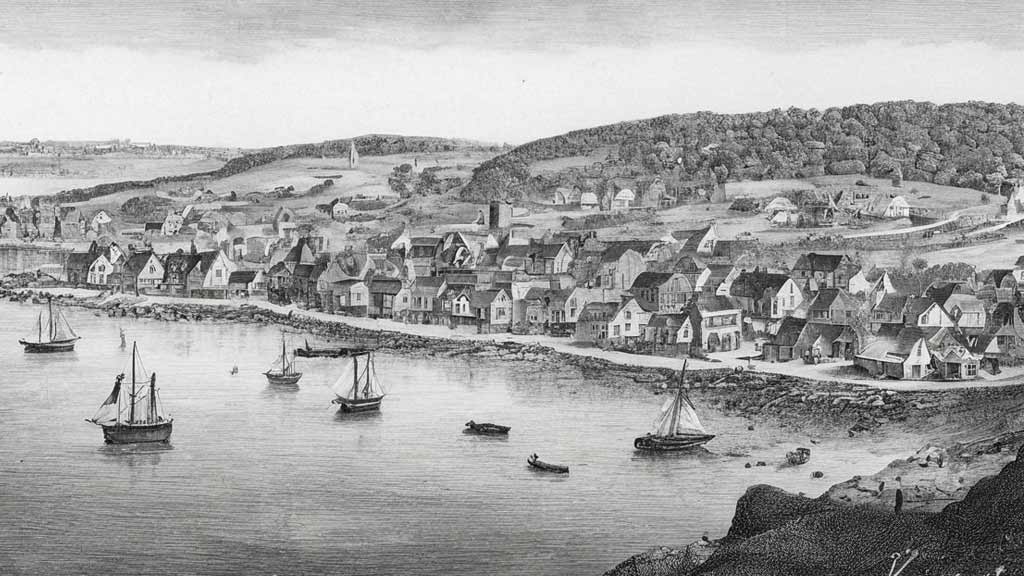
Rockport, then known as the North Precinct of Gloucester, remained part of the larger town for nearly two centuries. However, by the 18th century, a sense of distinct identity began to emerge among the residents of Sandy Bay.
They felt a growing need for more local control and a desire to establish their own unique character.
In 1840, this desire for autonomy culminated in the official separation of Rockport from Gloucester. The town was named after Colonel John Quincy, the maternal grandfather of Abigail Adams and a respected figure in the community.
This act marked a turning point in Rockport’s history, allowing the town to chart its own course and shape its future.
Economic Boost with Granite and Concrete
Rockport’s story is deeply intertwined with the rise and fall of two key industries: granite and concrete.
The town’s abundant granite resources, known for their strength and beauty, became a major economic driver in the mid-19th century.
The opening of numerous quarries provided a significant source of employment for residents. Rockport granite was used in the construction of iconic landmarks throughout the country, including the Bunker Hill Monument in Boston.
The early 20th century saw the emergence of the Rockport Lime Company, which played a vital role in the development of modern concrete.
The company’s innovative processes and high-quality lime products were instrumental in major construction projects across the United States.
While both industries eventually declined, their legacies remain evident in the landscape of Rockport and the enduring work ethic of its residents.
Rockport’s revolt against rum (1856)
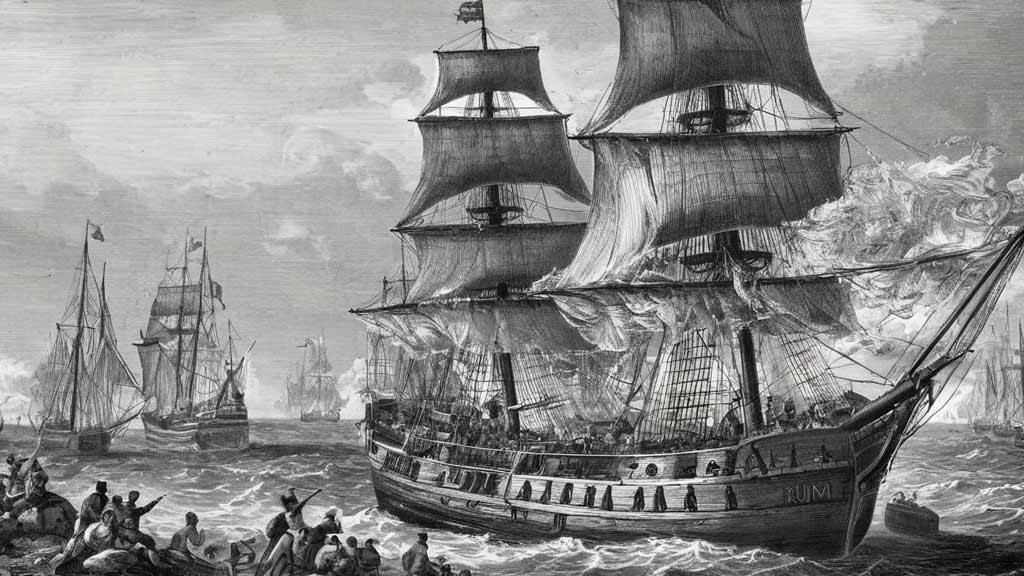
An interesting and unique chapter in Rockport’s history is the “Rockport Revolt against Rum” of 1856. Led by a group of 200 women, spearheaded by Hannah Jumper, the revolt aimed to curb the negative social effects of alcohol consumption in the community.
These women stormed taverns and destroyed barrels of liquor, ultimately leading to a town-wide ban on alcohol sales. This ban, with exceptions, remained in place for much of Rockport’s history, solidifying its reputation as a temperance-minded community.
Labor Movement in Rockport Quarries
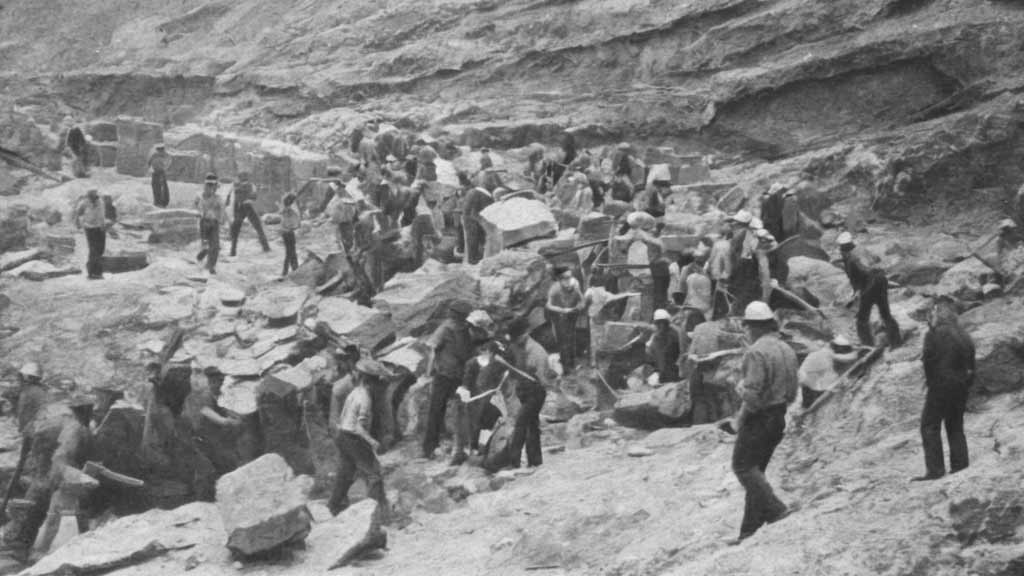
The granite quarries of Rockport were not without their challenges. Working conditions were often harsh and dangerous. In the late 19th and early 20th centuries, labor movements emerged among quarry workers, seeking better wages, safer working conditions, and shorter work hours.
These movements, while facing opposition, played a crucial role in securing improved labor practices within the Rockport granite industry.
Turning into Artists Colony
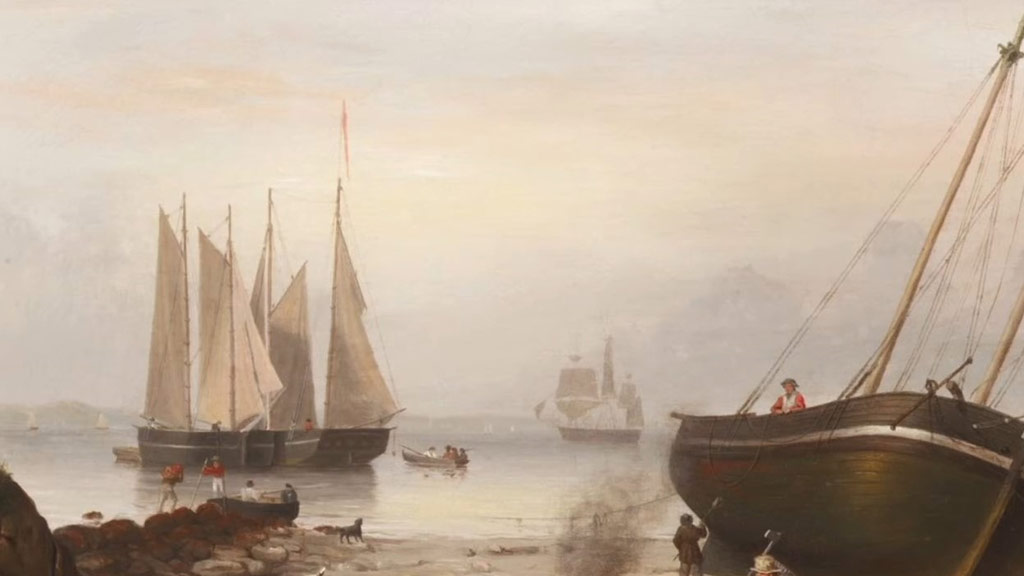
The natural beauty of Rockport, with its rugged coastline, quaint harbor, and dramatic rock formations, has long attracted artists. By the late 19th century, Rockport was evolving into a vibrant artists’ colony.
The arrival of Fitz Hugh Lane, a renowned landscape painter, in 1850 is often credited as a catalyst. Lane’s captivating seascapes, depicting the power and majesty of the Atlantic Ocean, brought Rockport to the attention of the wider art world.
Following Lane’s lead, other artists, captivated by Rockport’s unique charm, began flocking to the town.
These included artists like T.H. Wetherbee, known for his realistic coastal scenes, and Marguerite Zorach, a sculptor who established a summer studio in Rockport.
This influx of talent fostered a thriving artistic community. Art galleries, studios, and art schools sprang up, further solidifying Rockport’s reputation as a creative haven.
The early 20th century saw the arrival of the famed “Pigeon Cove School” of artists. This group, led by Marsden Hartley and Charles Webster Hawthorne, embraced a bold and expressive style, often using Rockport’s scenery as inspiration.
Their work gained national recognition, further cementing Rockport’s place on the map of American art.
Today, Rockport continues to be a thriving center for the arts. Numerous galleries showcase the work of local, national, and international artists.
Art festivals, workshops, and exhibitions draw visitors from all over. The legacy of the early artists lives on, and Rockport’s artistic spirit continues to inspire generations of creative minds.
Whether it’s the crashing waves, the weathered fishing shacks, or the vibrant colors of a sunset, Rockport’s unique beauty continues to serve as a muse, attracting artists and art lovers alike.
What Is Modern Rockport Famous For?
Rockport, Massachusetts, has undergone a fascinating transformation. Once a bustling center of granite and concrete production, it has evolved into a charming coastal town where history and modern life intertwine.
Here’s a glimpse into what defines modern Rockport:
Enduring Artistic Legacy
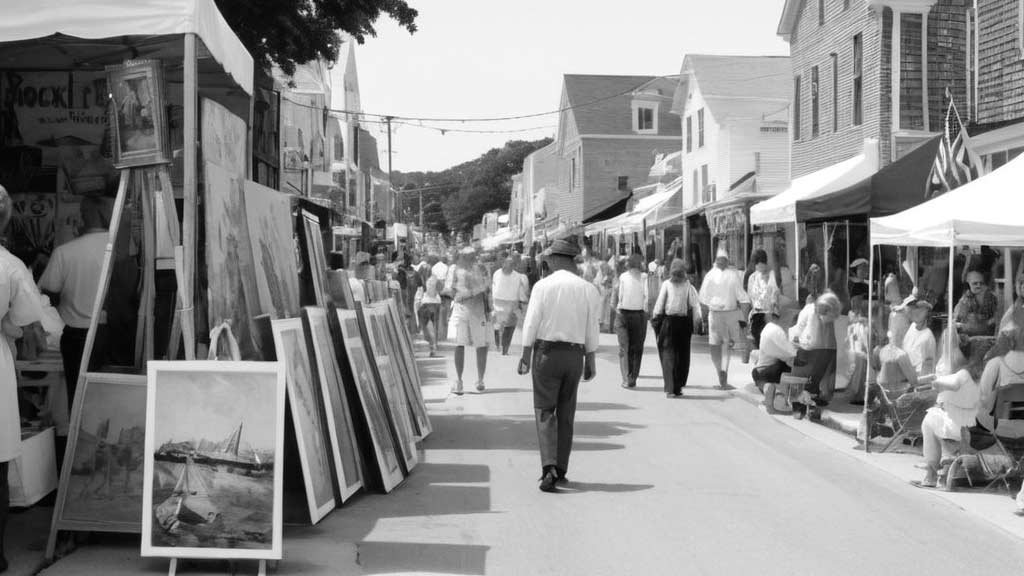
Rockport’s artistic heritage remains a cornerstone of its identity. Numerous art galleries line the streets, showcasing a diverse range of styles and mediums.
The famed Rockport Art Association, established in 1866, continues to be a vibrant hub for local artists, offering exhibitions, workshops, and educational programs.
Annual events like the Rockport Art Festival and the Labor Day Weekend Sidewalk Art Show draw crowds of art enthusiasts. Strolling through Rockport’s streets is akin to walking through an open-air art museum.
Thriving Tourist Destination
Rockport’s picturesque harbor and stunning coastline have made it a popular tourist destination.
Visitors flock to experience the town’s quaint charm, explore its historic sites like the 哨兵小屋 (Shao Bing Wu Xia – translated: Sentinel Cottage), a replica of a fisherman’s shack, and enjoy fresh seafood at waterfront restaurants.
Whale-watching tours and kayaking adventures offer opportunities to experience the beauty of the surrounding waters.
The Rockport Inn, a historic landmark and former artists’ retreat, continues to attract guests seeking a quintessential coastal getaway.
Harbor Charm and Maritime Heritage
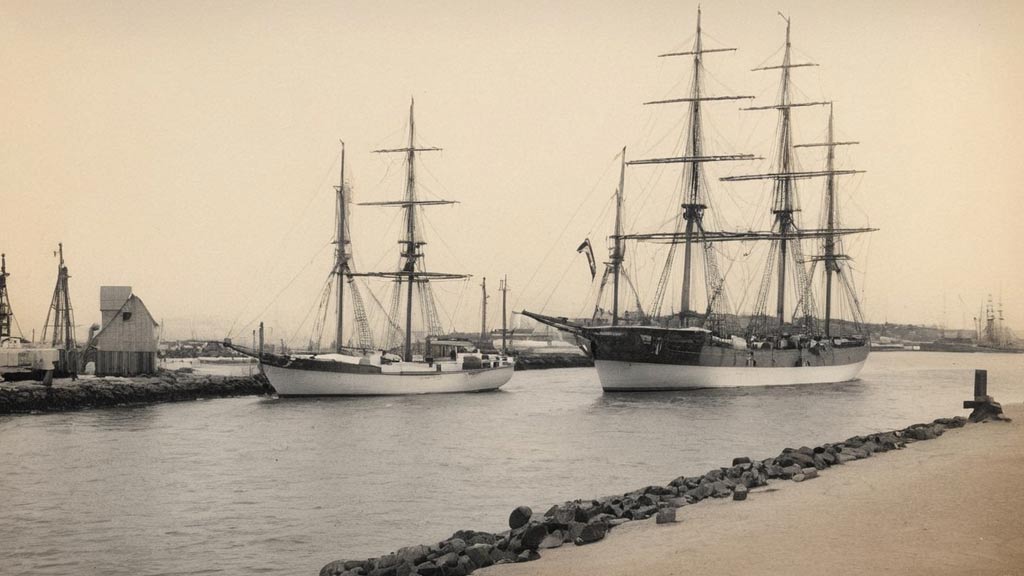
Rockport Harbor remains the heart and soul of the town. A vibrant working harbor, it bustles with activity. Commercial fishing boats co-exist with pleasure crafts, creating a unique blend of tradition and leisure.
The Rockport Marine offers educational cruises and harbor tours, allowing visitors to delve deeper into the town’s maritime history.
The Motif No. 1 building, a red fishing shack considered the most painted building in the world, serves as a captivating reminder of Rockport’s enduring connection to the sea.
A Focus on Sustainability
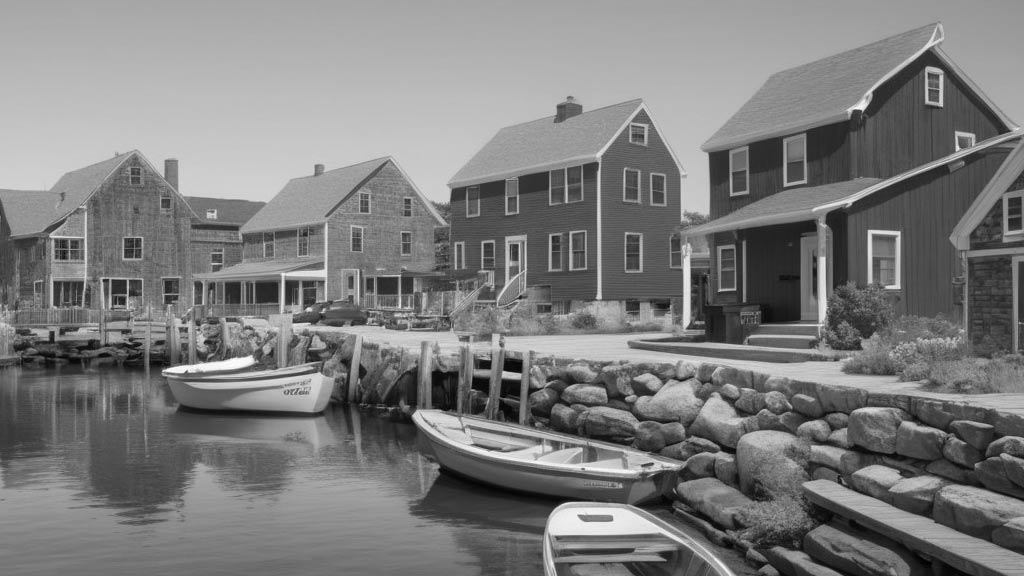
Modern Rockport embraces sustainable practices. The town actively promotes responsible environmental stewardship. Local businesses prioritize locally sourced ingredients and eco-friendly products.
The Rockport Farmers Market provides a platform for local farms and artisans, offering fresh produce and handcrafted goods.
Many residents embrace alternative transportation options like cycling and walking, further contributing to a more sustainable way of life.
Maintaining a Small-Town Feel
Despite its popularity, Rockport has managed to retain its close-knit, small-town atmosphere. A strong sense of community spirit pervades the town. Residents actively participate in local events and gatherings.
The historic Rockport Town Hall, built in 1898, continues to serve as a focal point for civic engagement. This sense of community fosters a welcoming environment for visitors and newcomers alike.
Challenges and Opportunities
Like many coastal towns, Rockport faces challenges like rising sea levels and the ever-changing tourism landscape.
However, the town is actively planning for the future. Efforts are underway to preserve the historic character of the town while ensuring its resilience in the face of environmental challenges.
Rockport’s artistic spirit and dedication to sustainability position it well to navigate these challenges and embrace new opportunities.
FAQs
Is Rockport still an art colony?
Absolutely! Rockport’s artistic legacy thrives to this day. The Rockport Art Association, established in 1866, remains a vibrant hub for local artists.
Galleries line the streets showcasing diverse styles, and annual events like the Rockport Art Festival draw art enthusiasts from around the world.
What are some things to do in Rockport?
Modern Rockport offers a variety of activities. Explore the numerous art galleries, visit historic sites like the Sentinel Cottage, or enjoy fresh seafood at waterfront restaurants.
What’s the significance of the Rockport Harbor?
The Rockport Harbor remains the heart of the town. A working harbor, it bustles with commercial fishing boats and pleasure crafts.
The Rockport Marine offers harbor tours, and the iconic Motif No. 1 building stands as a testament to Rockport’s maritime heritage.
Is Rockport a good place for eco-conscious travelers?
Yes! Rockport embraces sustainable practices. Local businesses often prioritize local ingredients and eco-friendly products.
The Rockport Farmers Market allows residents to access fresh, locally produced food. Many residents opt for cycling or walking, contributing to a more sustainable lifestyle.
Does Rockport have a strong sense of community?
Despite its popularity, Rockport retains its close-knit character. A strong sense of community spirit pervades the town, with residents actively participating in local events.
Conclusion
Without a doubt, the history of Rockport, Massachusetts, serves as a testament to the town’s enduring spirit and its ability to adapt and thrive amidst changing times.
From its roots as a humble fishing village to its emergence as a vibrant artistic community and tourist destination, Rockport’s evolution reflects the resilience and ingenuity of its residents.
As we reflect on Rockport’s past, let us also celebrate its present and look forward to its future. The town’s rich heritage, picturesque scenery, and welcoming community continue to captivate visitors from near and far, ensuring that its legacy will endure for generations to come.
As we bid farewell to this exploration of Rockport’s history, let us carry forward the lessons learned from its past and continue to cherish and preserve the unique character and charm that make Rockport a truly special place on the Massachusetts coast.
Jaclyn Lowe